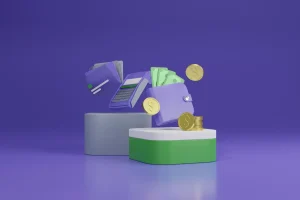Second Half of Summer – The Signs of Recovery
The economy grew in the third quarter at a brisk six percent annual rate, the Federal Reserve announced Thursday. Economists predict that widespread health scares, reviving consumer confidence, renewed investment in infrastructure, the easy availability of mortgages and government refunds will help support steady economic growth over the coming quarters. The fourth quarter is generally considered to be the strongest for the economy since the third quarter of 2021. The unemployment rate is expected to fall to six percent this quarter from its current level of about seven percent.
Consumer confidence has picked up after being battered by the Great Recession. Consumer sentiment climbed to its highest level since the end of the third quarter of 2021. A strong jobs report also helped fuel consumer confidence. In addition, consumers are optimistic about the outlook for the upcoming fiscal year, according to some economists. In mid-July, employment reached a record high of nearly two million. With the unemployment rate expected to drop to around five percent this year, the economy is primed to rebound.
The second major economic indicator considered by economists is consumer price inflation. The rise in base index prices such as food and gasoline triggered sharp increases in consumer spending. Consumer price inflation is thought to have been driven in part by the Federal Reserve’s decision to purchase $600 billion in debt securities as part of its efforts to raise interest rates. The Federal Reserve is estimated to begin raising short-term interest rates this month as part of its plan to raise stimulus spending and tighten bank standards for lending.
Another indicator of the health of the economy is the state of its balance sheet. Last week’s report showed the economy had made progress in the current quarter in improving the financing quality of credit. The gross domestic product increased by a bit in the third quarter, bringing the yearly growth rate to a faster pace than analysts expected. Long term indicators including gross domestic product growth and employment gains are currently pointing to an overall improvement in the outlook for the economy. In addition, inventories were running at a level that is too low to support rapid growth.
Consumer price inflation has been in a gradual decline since bottoming out at the end of the first half of the year. Consumer price inflation is believed to have been driven by increases in both demand and supply, as well as high levels of unsold inventory in the market. In the second half of the year, retail inventories were beginning to edge lower as the end of the holiday season approached. Now, inventory levels have begun to normalize and inventory levels are starting to trend higher. Economists expect that retail inventories will remain high until the end of the second half of this year, allowing the economy to increase its rate of expansion in the second half of this year.
In general economic indicators such as consumer spending and gross domestic product growth are pointing to a slow but steady recovery in the economy. In fact, in the last month there were some signs of strength in the economy, including first-time applications of new home loans and new home purchases, which appeared to be picking up steam. The unemployment rate has also picked up, from 5.5 percent in the last month to a current rate of 5.3 percent. Economists feel that the job market is still on the mend, though many indicators point to the fact that consumers have yet to completely recover from the impact of the Great Recession. While consumer spending is picking up, some economists believe that it is just the beginning of a rebound from the recent mortgage crisis.
As indicated above, there is still time for the economy to absorb the excess spending that resulted from the recession. The key to recovery is being able to apply the stimulus package fully, with the federal stimulus program expected to last between six and nine months. Many economists agree that this amount of time is too short to effectively change the state of the economy. Instead, it is important for businesses to begin implementing new strategies designed to boost sales and reduce expenses. In addition, consumers must also begin cutting back on non-essential expenses and increase savings, both of which could affect the economy in different ways.
For many Americans, this is the second half of the summer that they are looking forward to. With gas prices at an all-time high, fewer vacations planned, and fewer jobs, many are looking forward to taking advantage of the extra spending that will undoubtedly occur throughout the summer months. With gas prices at record highs, more people are saving money to purchase cars. With fewer jobs, more people are opting to rent rather than purchasing a vehicle, further reducing the demand for gasoline. These factors, combined with the relatively weak economy, have slowed the recovery in the economy, but it has not lost the hopes of many, including consumers.
About Author
You may also like
-
The Future of Sustainable Urban Logistics: How Last-Mile Delivery is Getting a Green Overhaul
-
Investigating the Rise of Regulatory Technology (RegTech) and Compliance Startups
-
The Hidden Price Tag: Your Data, Your Money, and the Cost of Staying Private
-
Building Financial Resilience Through Community-Based Models Like Mutual Aid and Time Banking
-
The Unseen Newsroom: How Citizen Journalists Are Rewriting Breaking News
 Post-Viral Recovery Protocols and Long-Term Immune System Retraining
Post-Viral Recovery Protocols and Long-Term Immune System Retraining  Building a Resilient Microbiome for Urban Living and Processed Food Environments
Building a Resilient Microbiome for Urban Living and Processed Food Environments  The Future of Sustainable Urban Logistics: How Last-Mile Delivery is Getting a Green Overhaul
The Future of Sustainable Urban Logistics: How Last-Mile Delivery is Getting a Green Overhaul 










